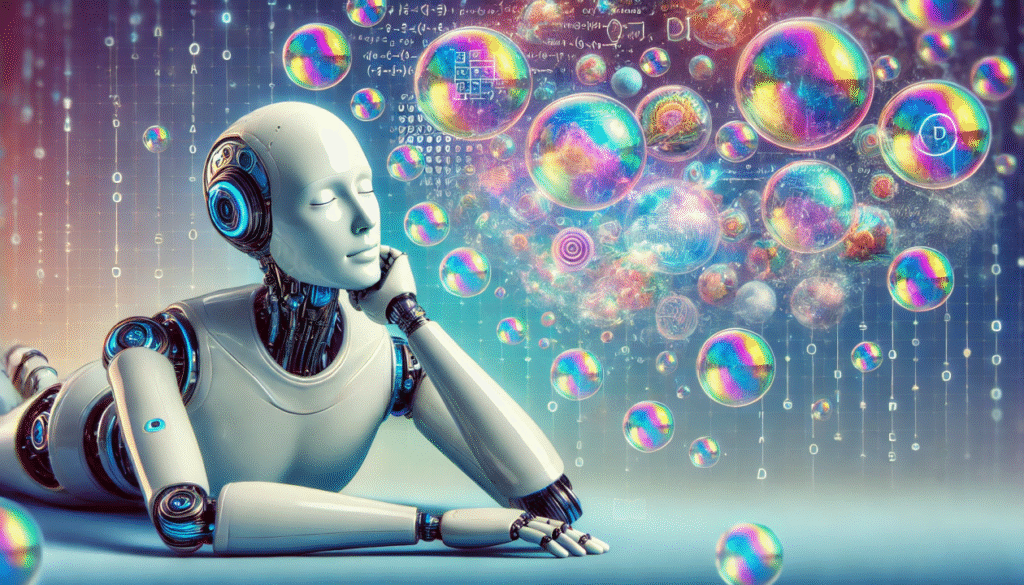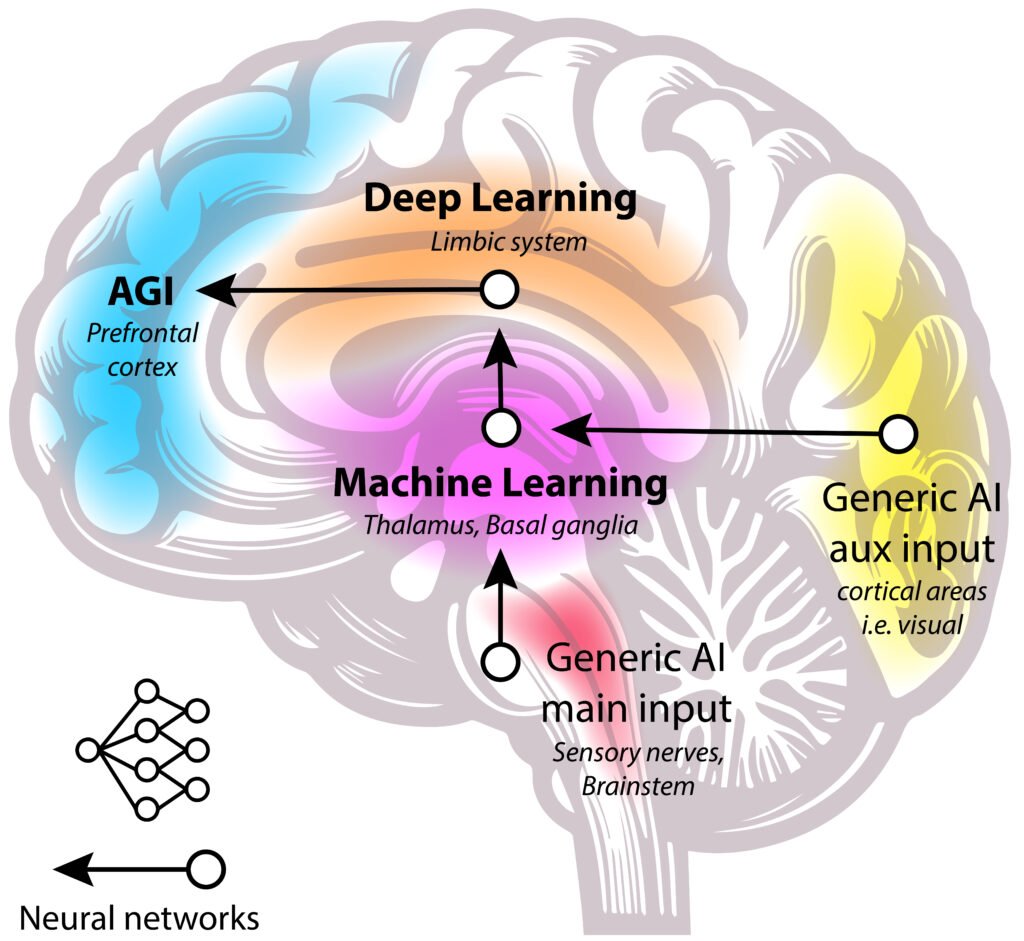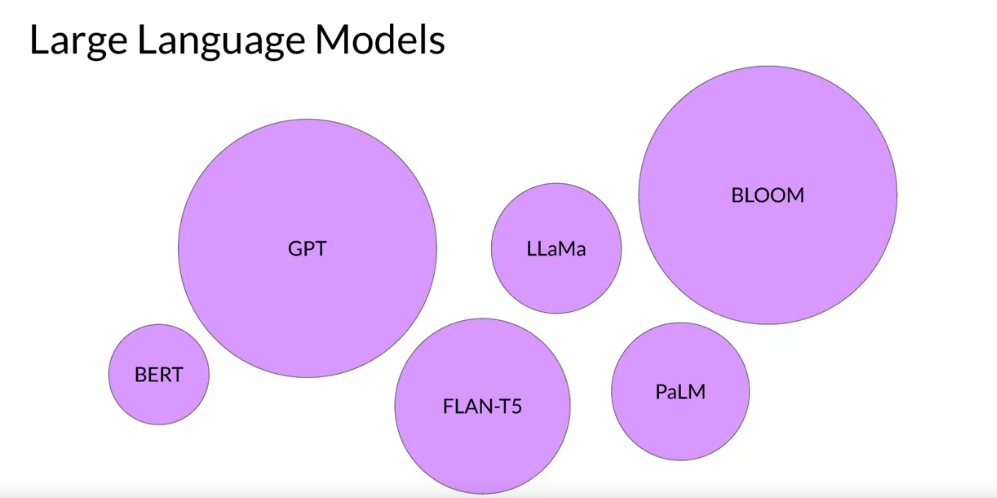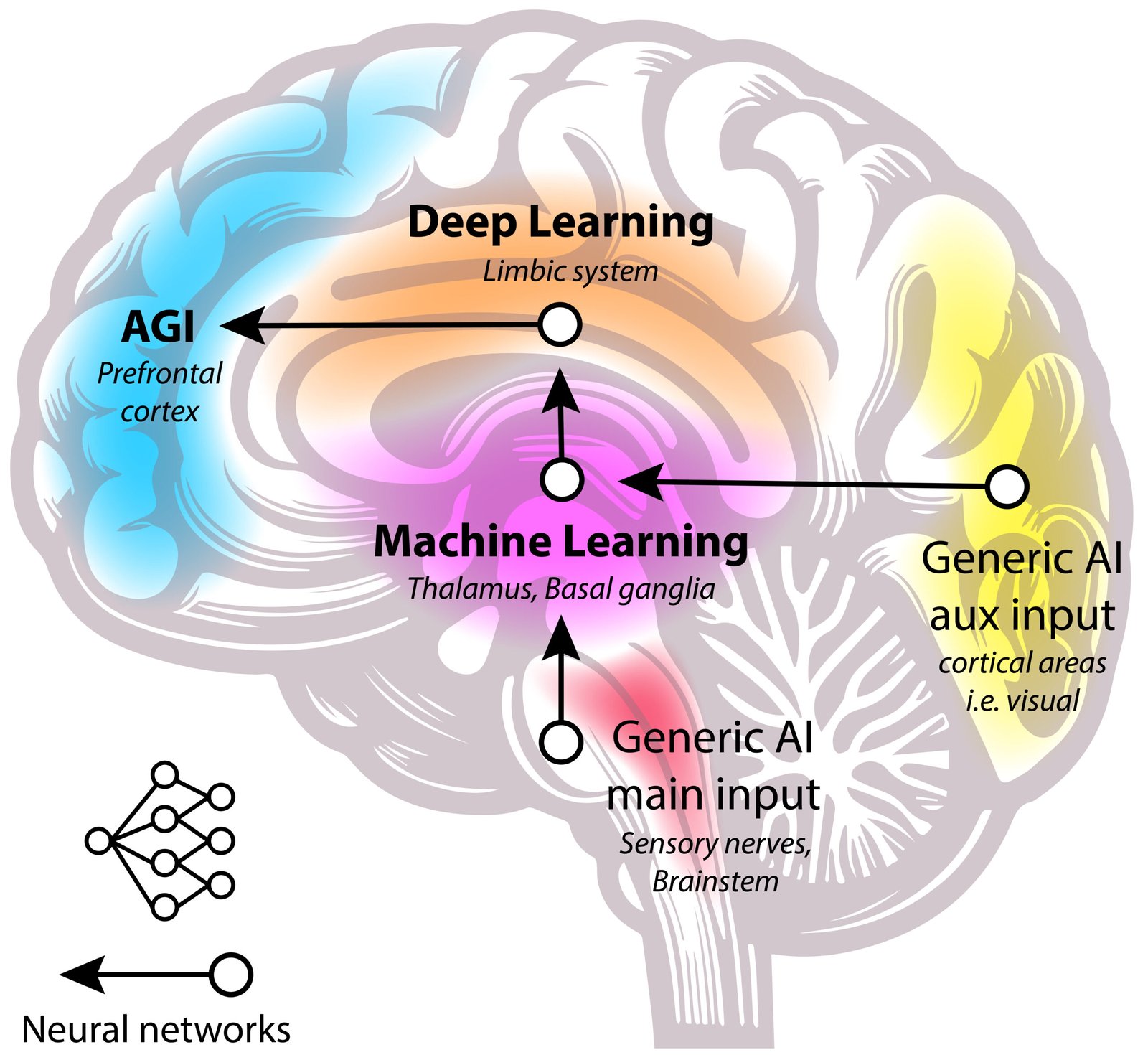Why AI Hallucinates: 5 Shocking Reasons (And How to Catch Them Fast)
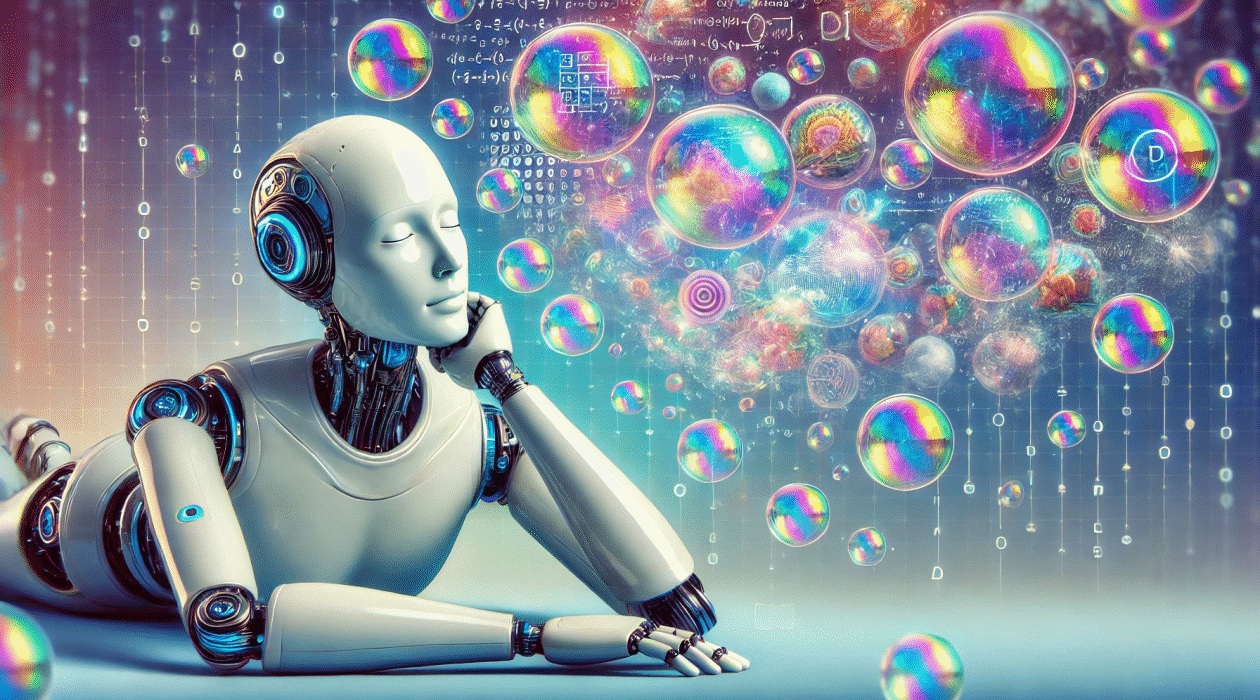
Why AI hallucinates
Wait… Did ChatGPT Just Make That Up?
You ask ChatGPT:
“What are the top 3 books written by Albert Einstein?”
It confidently replies:
- Time Travel for Beginners
- Quantum Thoughts: A Memoir
- Relativity: The Hidden Chapters
Wow — sounds smart, right?
But guess what?
None of those books exist. Einstein never wrote them.
The AI just made them up — titles, authorship, even fake chapters.
That’s called a hallucination.
It’s when AI creates something that sounds real… but isn’t.
No facts. No truth. Just a really good guess.
So, Why AI Hallucinates?
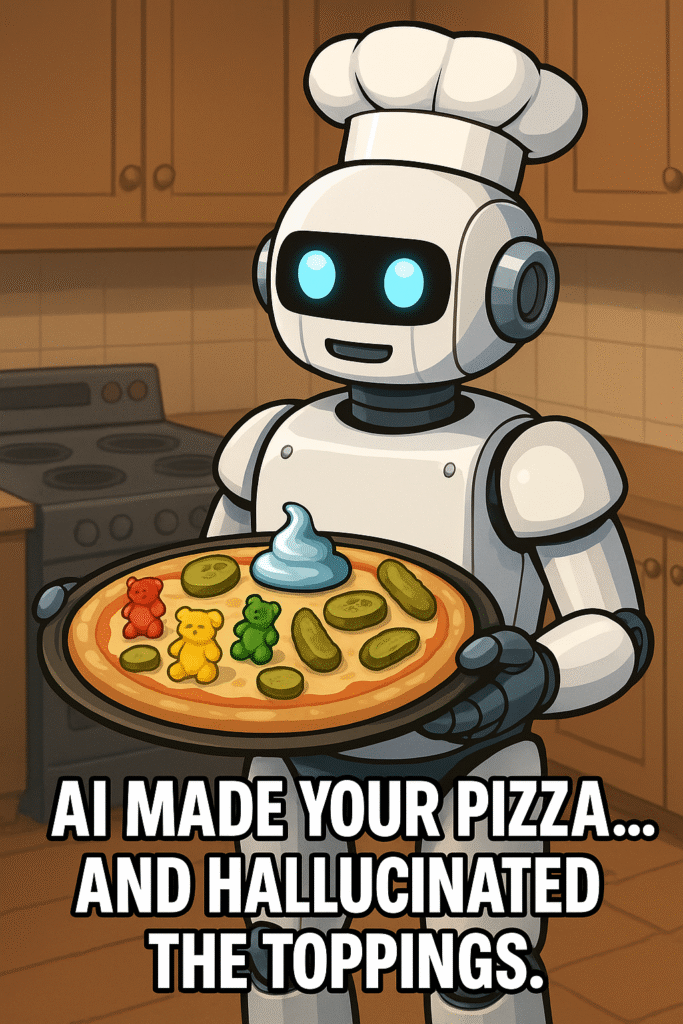
Let’s start with the big idea.
Why AI Hallucinates:
AI doesn’t know the truth. It only knows patterns.
When you ask a question, it tries to guess the best-sounding answer based on what it has seen before.
But if it hasn’t seen the exact answer before?
It fills in the blanks.
Sometimes correctly.
Sometimes very, very wrong.
What Does “Hallucination” Mean in AI?
In real life, hallucinations mean seeing or hearing things that aren’t there.
In AI, it means:
“The model made up something that looks real… but isn’t.”
It could be:
- A fake name
- A wrong quote
- A made-up study
- A wrong math answer
- A pretend website
- A weird-looking image
The AI isn’t lying.
It just doesn’t know better — because it doesn’t know at all.
But Why Does This Happen?

Let’s break down why AI hallucinates into simple steps:
1. No Brain, Just Patterns
AI doesn’t think. It doesn’t feel. It just guesses what comes next based on what it has seen before.
2. No Real Memory
AI doesn’t remember your past questions unless programmed to. It treats each prompt as new — and starts guessing.
3. Missing Data = Made-up Answers
If it hasn’t seen the info before (like a brand-new event or a niche topic), it makes its best guess. Often… wrong.
4. It Prioritizes Sounding Smart
AI is designed to be helpful. So it always tries to answer, even when it should say “I don’t know.”
Real-Life Example
You ask:
“What are 5 books written by Elon Musk?”
AI replies:
- Space Dreams
- Tesla Thinking
- The Neural Link
- Mars for All
- The Future Code
Looks real. But…
All of them are fake. Elon Musk didn’t write any of those.
That’s a hallucination.
Analogy Time: Pizza with Mystery Toppings

Imagine ordering pizza.
You say:
“I want pepperoni, mushrooms, and… surprise me!”
The AI makes your pizza — but it doesn’t know what you actually want.
So it throws on jellybeans. And spinach. And toothpaste.
It looks like a pizza.
But it’s not what you expected.
That’s how hallucinations feel in AI.
How to Spot AI Hallucinations (Even If You’re Not a Tech Expert)
Here’s how to catch hallucinations like a pro:
✅ 1. Fact-Check Everything
Copy-paste the AI’s answer into Google.
If it sounds “too perfect,” check again.
✅ 2. Ask for Sources
Say:
“Can you give me links to official sources?”
If it gives fake or broken links — it’s probably hallucinating.
✅ 3. Use Specific Prompts
Instead of asking:
“What’s the law on copyright?”
Ask:
“What does the Copyright Act of India (1957) say about Section 14?”
Specific = fewer made-up guesses.
✅ 4. Test It Twice
Ask the same question twice.
If the answers are different — warning sign!
✅ 5. Know the Red Flags
Watch for:
- Fake books
- Wrong dates
- Quotes that don’t exist
- Confidence with zero backup
Can We Stop AI Hallucinations Completely?
Not yet.
Even top models like GPT-4o, Claude, and Gemini hallucinate.
But teams are working on:
- Retrieval-based AI (uses real-time internet)
- Truth filters
- Source validation
- Fine-tuning on trusted data only
Until then… the best defense is you.
Funny Hallucination Moments (Yes, These Are Real)
- Claimed “Barack Obama was born in Kenya in 1980”
- Made up legal cases that never existed
- Created fake books with fake ISBNs
- Cited articles from newspapers that never published them
- Told users the Earth has two moons 😅
TL;DR — Why AI Hallucinates (And How to Spot It)
| 🚫 Why It Hallucinates | 🔍 How to Spot It | ✅ What You Can Do |
|---|---|---|
| No real knowledge | Fake names, links, or facts | Always fact-check |
| Guesses to fill gaps | Sounds too perfect | Ask specific questions |
| No awareness of truth | Gives different answers | Ask for sources |
| Prioritizes fluency | Can’t explain citations | Don’t trust without proof |
Don’t Let AI Fool You Again
Now you know why AI hallucinates — and how it can sound smart while being totally wrong.
Here’s how to outsmart the robots:
✅ Subscribe to our AI Without the BS newsletter — no fluff, just real explainers
📥 Download our free Hallucination Detection Checklist (PDF)
📲 Follow us on Instagram & YouTube for 60-sec no-BS AI tips
💬 Know someone who blindly trusts ChatGPT? Send them this blog.





